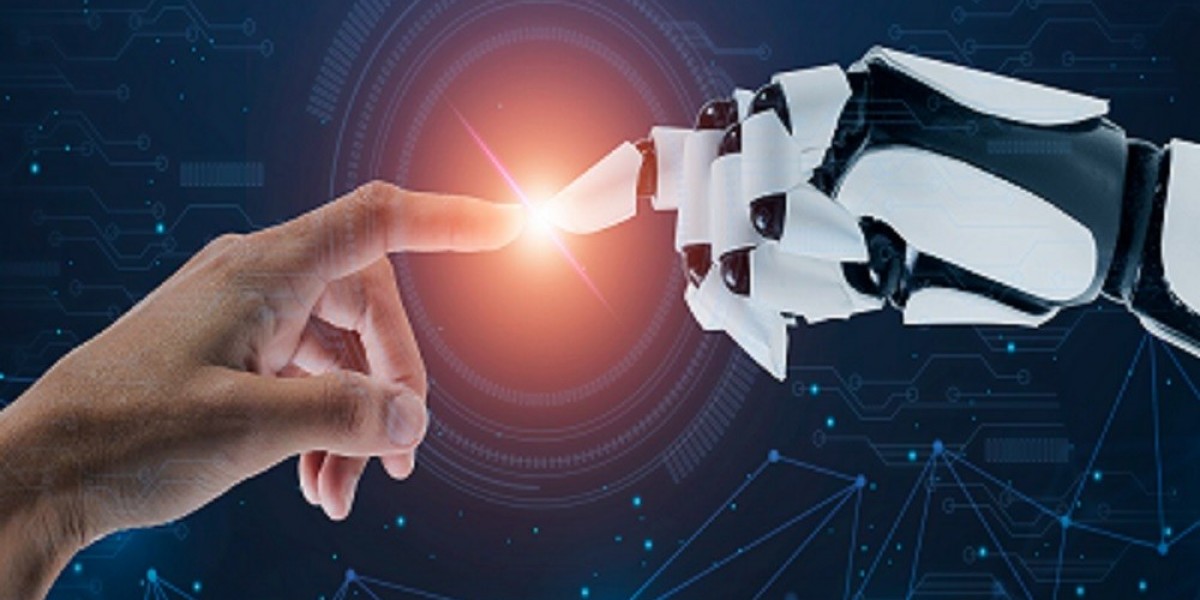In the vast world of technology, Artificial Intelligence (AI) emerges as a fascinating realm that transforms the way we engage with machines. This exploration delves into the captivating topic of "Types of Artificial Intelligence," unraveling the distinct categories that bring machines closer to mimicking human cognitive functions. From specialized AI that handles specific tasks to the aspirational goal of machines with broad intelligence, the journey of AI is a captivating adventure. Join us as we navigate through the intricate landscape of intelligence replication in the realm of technology.
I. Embracing the Spectrum of Artificial Intelligence
Narrow AI (Weak AI):
Let's start with the friend we know best - Narrow AI or Weak AI. It's like having a tech-savvy buddy who's really good at one thing, whether it's answering questions on our virtual assistants or suggesting movies on streaming platforms. It excels in its specific role but doesn't have the magic to step into other tasks.
General AI (Strong AI):
Now, meet the overachiever - General AI or Strong AI. This is the AI that dreams are made of, aiming to be as versatile as the human mind. Imagine a machine that not only tackles specific tasks but also learns, adapts, and transfers its knowledge to different challenges. While we're not quite there yet, the pursuit is on!
Artificial Superintelligence (ASI):
Enter the superhero of the AI world - Artificial Superintelligence. This is the stuff of legends, a level of intelligence that surpasses human capabilities in every imaginable task. It's like having a super-smart sidekick that outshines even the brightest human minds. Though it's still in the realm of speculation, the ethical and existential questions it raises are worth pondering.
II. The Heart of AI: Understanding Functionality
Reactive Machines:
Think of Reactive Machines as the pioneers of AI, operating based on predefined rules. They're like the trusty chess-playing programs that follow set strategies. They do what they're told, but their scope is limited to the rules written in their code.
Limited Memory:
Moving forward, we encounter Limited Memory AI or "classical AI." These systems have a bit more memory, like a digital historian, learning from past experiences to make decisions. Imagine an AI doctor diagnosing ailments based on a wealth of medical data – that's Limited Memory AI in action.
Theory of Mind:
Now, let's venture into the theoretical realms with Theory of Mind AI. This is the dreamer, envisioning machines that understand human emotions, beliefs, and intentions. It's the empathetic AI companion that can read social cues and interact with us on a more nuanced level.
III. Learning the Dance of Intelligence
Machine Learning (ML):
Machine Learning takes us to the world of adaptability. It's like giving machines the power to learn from data without explicit programming. Picture algorithms that get better over time, from recognizing faces in photos to suggesting your next favorite song.
Deep Learning:
Deep Learning is the maestro of intelligence, inspired by the intricacies of the human brain. Neural networks mimic our own, allowing machines to recognize complex patterns. From image and speech recognition to autonomous vehicles, Deep Learning powers the breakthroughs that make technology feel more human.
Reinforcement Learning:
Reinforcement Learning introduces us to the learning-by-doing approach. Machines become adventurers in an environment, making decisions based on trial and error. Think of game-playing agents mastering new levels or robots learning to navigate complex spaces.
IV. Applications in Our Daily Lives
Natural Language Processing (NLP):
Natural Language Processing brings a touch of humanity to AI. It's the language interpreter, making chatbots sound more like conversational partners and turning voice-activated assistants into our tech-savvy buddies.
Computer Vision:
Computer Vision is the artist of the AI world, enabling machines to interpret and make decisions based on visual data. Imagine cameras that recognize faces, self-driving cars that navigate through traffic, and medical systems that analyze complex images.
Expert Systems:
Expert Systems play the role of digital consultants. They're the wise advisors, emulating human expertise in specific domains. From diagnosing medical conditions to providing financial insights, these systems offer recommendations based on their vast knowledge databases.
V. The Future Tapestry of Artificial Intelligence
As we peer into the future of Artificial Intelligence, the canvas unfolds with ongoing research, technological leaps, and the delicate dance between human aspirations and machine capabilities.
VI. A Conclusion: Navigating the AI Symphony
In conclusion, the journey through the Types of Artificial Intelligence is like exploring a grand symphony of intelligence replication. From specialized performers to the dreamers envisioning machines with human-like understanding, each note in this symphony defines the potential of AI to reshape our world. As we navigate this captivating landscape, let's keep in mind the harmony of responsible and ethical AI development, ensuring that the impact of artificial intelligence aligns with our values and enhances our collective well-being. The adventure continues, promising a future where machines and humans coexist, creating a melody of intelligence that enriches our lives in ways we've only begun to imagine.







